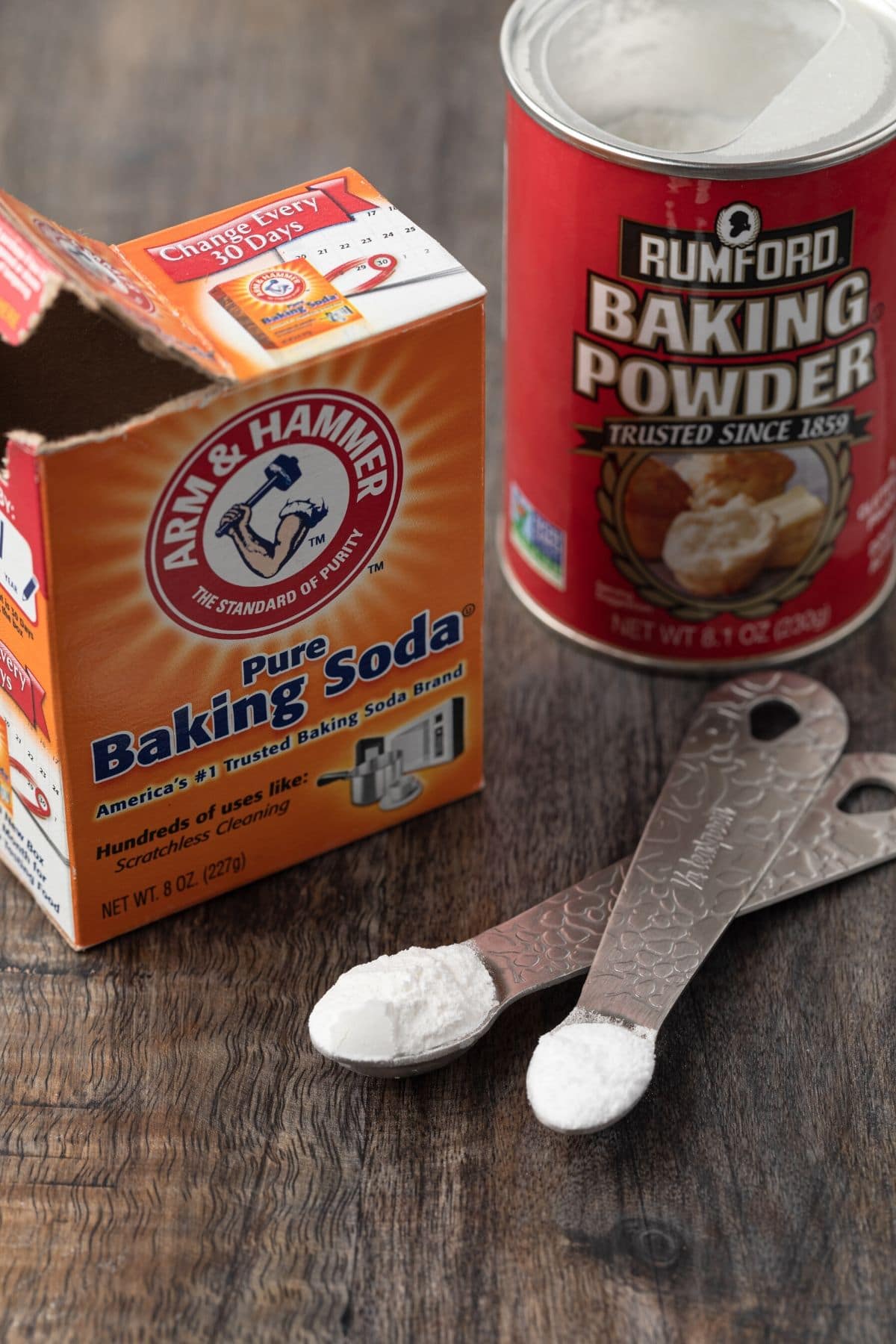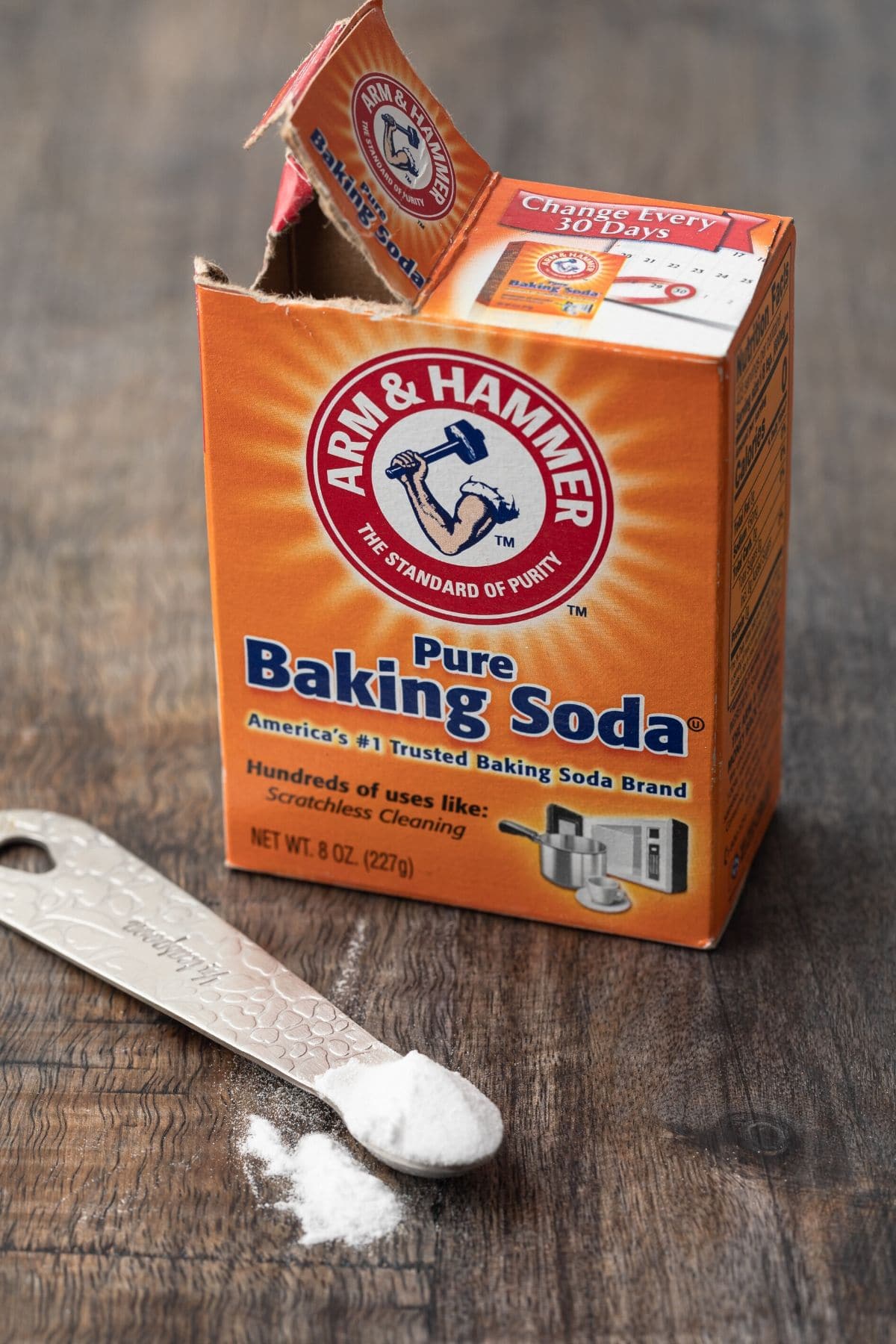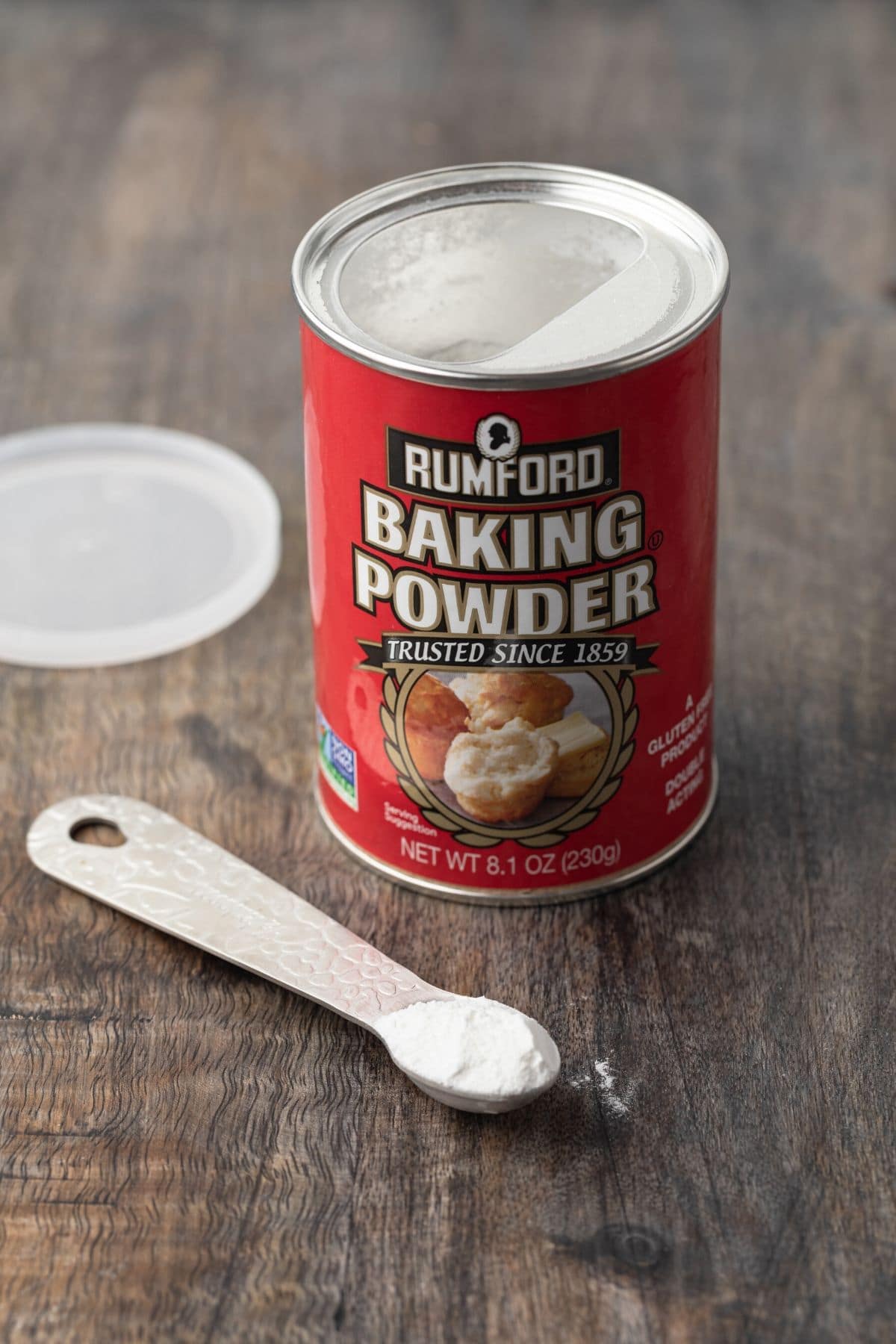Baking Powder vs Baking Soda
This post may contain affiliate links. Read the full disclosure here.
Baking powder vs baking soda. Which one to use and when to use both? This article will lay out the basics so you can become a better baker.

Baking powder and baking soda are chemical leaveners. Once these leaveners come in contact with moisture or heat, they begin to break down creating a production of gases. These gases are what gives baked good their rise.
Baking soda is the most common chemical leavener and it must be combined with an acid. The acid is either added separately to the recipe or combined in the form of baking powder.
Baking soda
Baking soda (sodium bicarbonate) decomposes and produces gas when combined with moisture and heat. But, baking soda alone is not a practical choice for leavening because very large amounts would be needed to produce enough gas to leaven a baked good. Too much baking soda will cause the finished product to taste soapy or bitter and could produce yellow or green discoloration.

Baking soda must be used with an acid in order to work as a leavening agent. The acid will react with the sodium bicarbonate in the presence of moisture. This causes the sodium bicarbonate to break down rapidly and easily. Also, less baking soda is needed when combined with an acid so there are no off-flavors or undesired discoloration.
Common acidic ingredients used in baking
- Buttermilk
- Sourcream
- Yogurt
- Vinegar
- Brown sugar
- Fruit and fruit juices
- Molasses and honey
- Unsweetened chocolate and natural cocoa
It’s important to note that these ingredients can vary in acid content. Buttermilk, sour cream, and yogurt will increase in acidity as they age. This means you can’t necessarily swap one for the other.
The amount of baking soda used in a recipe is only the amount needed to neutralize the acid. Vinegar is a stronger acid than honey so a recipe using honey may require a different ratio of baking soda.
A disadvantage of using these acidic ingredients is they immediately react once combined with baking soda. This means you must bake the product immediately after mixing. Otherwise, the finished product will have no rise and you may not be so happy with the results.
Baking powder
There are different types of baking powder but they all contain baking soda plus an acid in the form of acid salt. The most common acid salt is cream of tartar. Acid salts release the acids once they are dissolved in water. So once your dough or batter is mixed, the acid salt starts to dissolve and release acid. The acid then reacts with the baking soda to produce gas for leavening.

It’s required by law that all baking powders release the same minimum amount of carbon dioxide. This means you can use any baking powder and get the same results.
Also, all commercial baking powders are double-acting. This means they are made with a combination of fast-acting acid salts and slow-acting acid salts. The fast-acting acid salt dissolves and reacts immediately when combined with moisture at room temperature. The slow-acting acid salt dissolves and reacts once heated.
Basically, in plain words, the leavening process begins once the batter or dough is mixed and then continues when it goes into the oven to bake.
When to use baking powder vs baking soda
Baking soda releases carbon dioxide gas only if there is also an acid present. But if more leavening action is needed, baking powder should be used. Avoid adding more baking soda because too much will produce a soapy or bitter taste.
Sometimes you will see both baking soda and baking powder in a recipe. Baking powder is added to provide additional leavening if the baking soda/acid reaction isn’t enough to sufficiently leaven the product.
Small amounts of baking soda can also provide richer color in products that contain natural cocoa or molasses.
Homemade baking powder
When you don’t have access to baking powder, you can use this formula to make a fast-acting baking powder – 2 parts cream of tartar, one a part baking soda, one part cornstarch.
This formula is measured by volume, not weight. For example: 2 tablespoons cream of tartar + 1 tablespoon baking soda + 1 tablespoon cornstarch.
You can make as little or as much as you need. The cornstarch is an anticaking agent and prevents the mixture from clumping up.
Storage and handling
All chemical leaveners should be kept in an airtight container at room temperature.
Baking powder has a shelf life of 6 to 12 months. But leaving it in an open container will cause it to absorb moisture and lose potency.
To test if baking powder has gone bad, put one teaspoon in a half cup of hot water. If it bubbles, it’s still good to use. If there’s no reaction, toss it and purchase a new one.
Baking soda will not lose potency if it absorbs moisture, but it can cause your baked good to develop dark spots.
To test if baking soda has gone bad, put one teaspoon in a splash of vinegar. If it bubbles heavily, it’s still good to use. If there’s little to no reaction, toss it and purchase a new one.

Thank you. Is this only added to self rising ? Can i use with any flour? Can i add yeast with baking soda and baking powder?
Or Do i leave out yeast with these two .
You don’t add anything to self rising flour. It already contains the rising agents. You can use with any flour but I always recommend following recipes closely as they have been tested to work with the leavening called for. You do not need to add anything leavening to yeast.
Beautiful explanation
Learning new things everyday about the science of baking ??. This is good information to have on hand. Thank you for the detailed post.
Very informative and easy to follow! Thank you
Every one of your recipes I’ve made have come out perfect.
My boys love, love, love your bagel recipe! I love making them so soft and spongy!